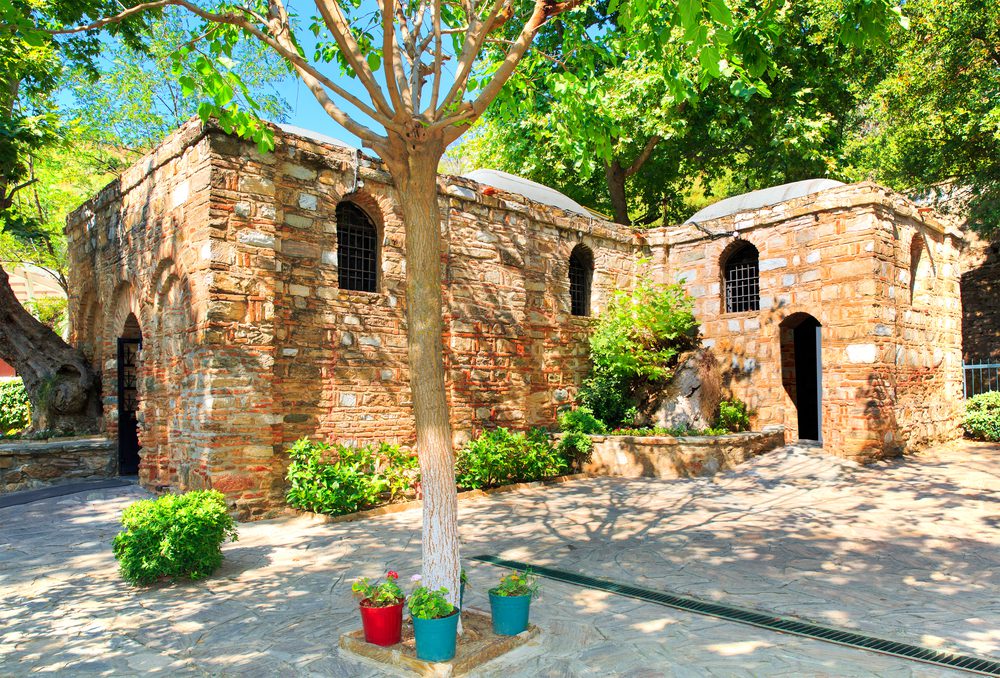Nestled in the picturesque hills of Selcuk, Turkey, lies a place of profound religious significance: the House of the Virgin Mary. This sacred sanctuary, believed to be the last residence of Mary, the mother of Jesus Christ, attracts countless pilgrims and tourists from all corners of the world. Steeped in history, legend, and spirituality, the House of the Virgin Mary is a place of reverence and contemplation.
Where is the House of the Virgin Mary?
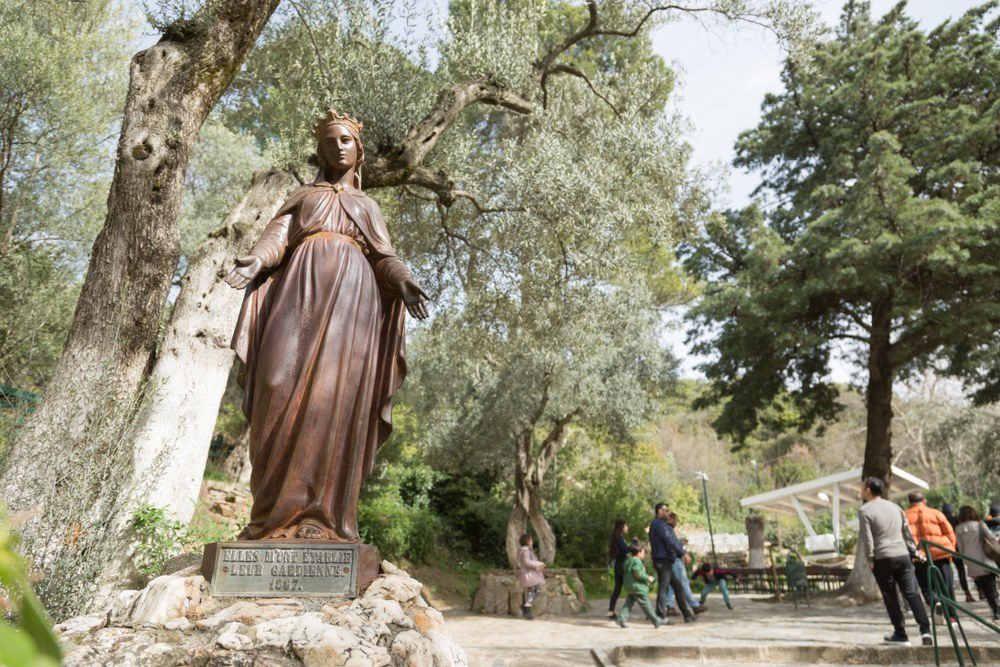
The House of the Virgin Mary is located in modern Turkey. It is situated on Mount Koressos (also known as Bülbüldağı), which is about 5 kilometers away from the ancient city of Ephesus, and 7 kilometers away from the modern-day town of Selçuk. The site is considered to be the place where the Virgin Mary, the mother of Jesus, spent her last years, and it has become a pilgrimage destination for Christians from around the world.
Before delving into the significance of the House of the Virgin Mary, it is essential to understand the historical context of Ephesus. This ancient city, located near the Aegean Sea, was once a bustling port and a center of trade and culture in the Mediterranean region. Ephesus flourished during the Hellenistic and Roman periods and was known for its magnificent architecture, including the grand Temple of Artemis.
The Legend of the House
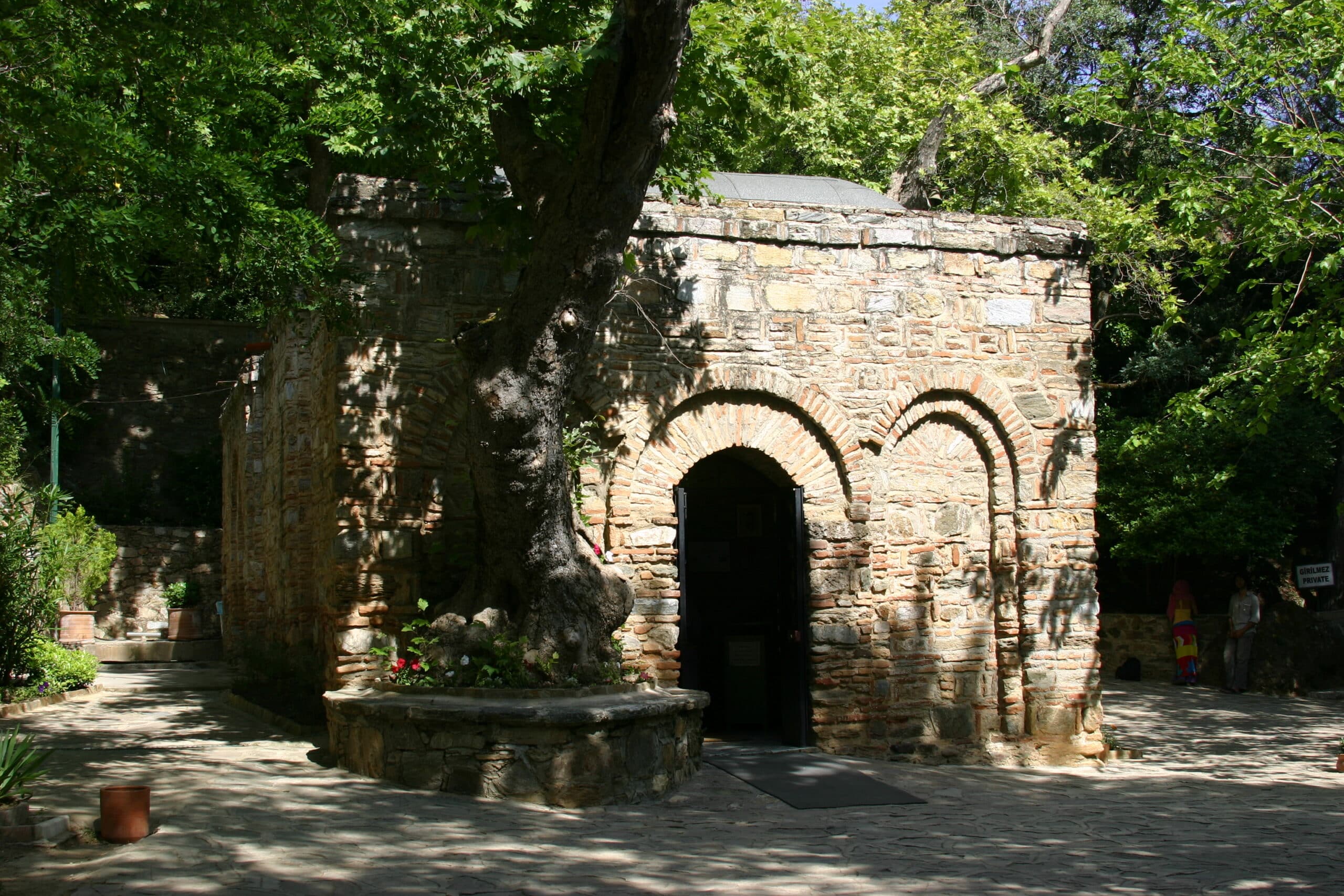
According to Christian tradition, after the crucifixion of Jesus Christ, the apostle John took Mary to Ephesus for safety. It is believed that Mary lived the final years of her life in a small stone house on Bulbul Mountain, which later became known as the House of the Virgin Mary. The legend of Mary’s presence in Ephesus has been passed down through generations, attracting pilgrims who seek solace and blessings.
Who took Mary to Turkey?
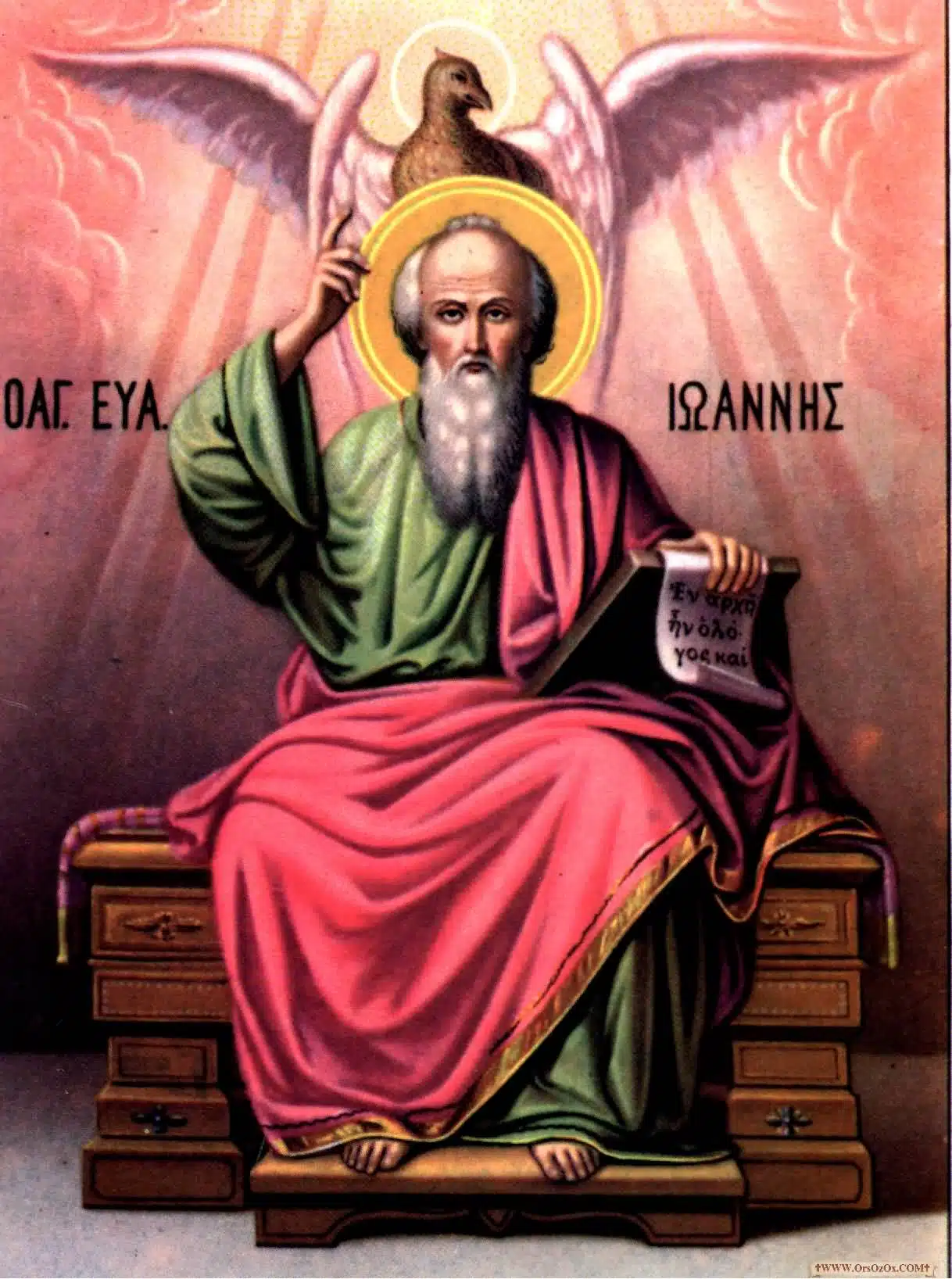
According to tradition and historical accounts, it is believed that St. John, one of Jesus’ disciples, took Mary, the mother of Jesus, to Turkey. The earliest hints of this tradition come from writings by Irenaeus and Eusebius of Caesarea, which suggest that John came to Ephesus in Turkey and brought Mary with him. They believe they lived in Ephesus until Mary’s Assumption (according to Catholic doctrine) or Dormition (according to Orthodox beliefs).
It is important to note that the details of these events are based on traditions and later accounts, as there is no direct biblical evidence or archaeological findings to confirm the exact circumstances of Mary’s life after the crucifixion of Jesus.
Is the Virgin Mary buried in Turkey?
The burial place of the Virgin Mary is a topic of debate and uncertainty. While some believe she spent her final years in Ephesus, Turkey, no concrete evidence supports this claim. The House of the Virgin Mary near Ephesus is considered a possible location but lacks conclusive archaeological or historical evidence. On the other hand, Jerusalem also claims her burial place, with the Church of the Dormition on Mount Zion being a significant pilgrimage site. The Roman Catholic Church hasn’t officially confirmed either location’s authenticity, leaving it a matter of faith and tradition. Thus, whether Mary is buried in Turkey or Jerusalem remains a matter of belief and interpretation for different Christian denominations.
Myth or Fact?

As per the Gospel of John and early Christian interpretations, Jesus entrusted John the Apostle with the care of His Mother, Mary, just before His death. Consequently, it is plausible that John would have taken her with him to Ephesus. After the crucifixion, John, Mary, and other disciples likely left Jerusalem to disseminate Jesus’ message and avoid persecution.
Jesus’ arrest and crucifixion on political grounds as the “King of the Jews” made his family and followers suspicious of the authorities. While some, like Jesus’ brother James, remained in Jerusalem, others scattered worldwide. Thomas went east, Mark south, and various followers dispersed around the Mediterranean. Traditions suggest that Mary Magdalene accompanied others to southern France, and a well-established belief places Mary, the Mother of Jesus, in Ephesus. However, historical records for these events are limited, and our understanding relies on isolated passages that reflect traditional beliefs.
First Evidence: Synodal Letter of the Council of Ephesus
The earliest reference to the possibility of St. Mary residing in Ephesus can be traced back to the synodal letter of the Council of Ephesus in 431. This letter mentions the city of Ephesians as the place where John the Theologian and St. Mary, the Virgin Mother of God, lived and were buried.
Second Evidence: Writings of Bar-Hebraeu
Another account comes from Bar-Hebraeus, a Jacobite bishop who wrote in the 13th century, suggesting that St. John took Mary with him to Patmos and later established the Church of Ephesus. This leaves uncertainty about whether Mary spent her final days in Patmos or in Ephesus, as the exact place of her death is not specified.
Third Evidence: Pope Benedict XIV
In the 17th century, Pope Benedict XIV claimed that Mary followed St. John to Ephesus. He even had plans to remove the lessons from the Breviary that mentioned Mary’s death in Jerusalem, but unfortunately, he passed away before he could carry out this intention.
These various accounts from different historical periods have contributed to the ongoing debate about the true location of St. Mary’s residence after the crucifixion of Jesus. The lack of direct evidence from the biblical texts and the span of time between the events and the recorded accounts add complexity to the question of where St. Mary lived and died. As a result, the tradition linking St. Mary to Ephesus remains a subject of historical and religious discussion.
Source: “The Enduring Goddess: Artemis and Mary, Mother of Jesus”, Carla Ionescu – 2016
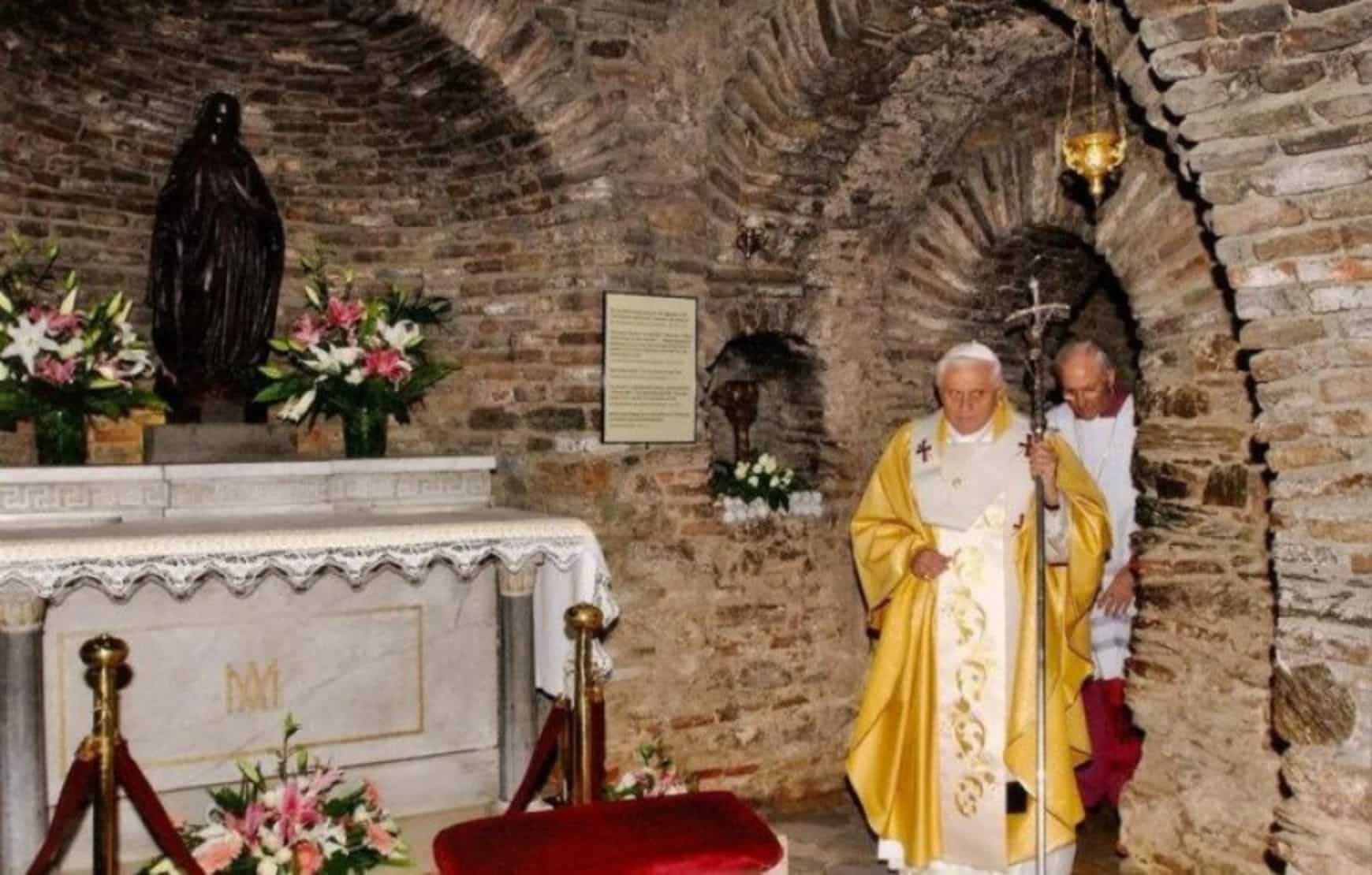
The question of whether Mary actually lived in Ephesus remains a topic of debate among scholars and religious historians. While some believe the House of the Virgin Mary in Ephesus to be the place where Mary lived, the evidence supporting this claim is not considered strong enough by all scholars.
Which Pope visited Mary’s House?
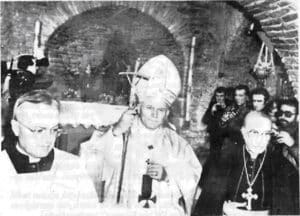
Pope Leo XIII formally recognized Mary’s House as an official place of pilgrimage in 1896. Later, Pope Pius X granted a plenary indulgence for the remission of sins to pilgrims who make the journey to Mary’s House, and in 1967, Pope Paul VI made the first papal visit to the shrine, bringing a bronze lamp as a present for the Blessed Virgin. A decade later, Pope John Paul II visited the shrine where he celebrated an outdoor mass for thousands of pilgrims. In 2006 Pope Benedict XVI celebrated mass at the House of Mary.
The Sacred Sanctuary
Discovery of the House
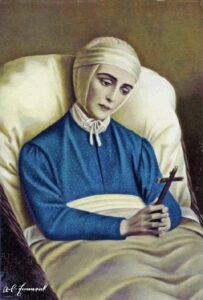
Catherine Emmerich, born in 1774, was a German Augustinian nun and mystic known for her vivid visions and religious experiences. In the early 19th century, she became renowned for her accounts of the life of Jesus Christ and the Virgin Mary. One of the most significant events detailed in Emmerich’s visions was the House of the Virgin Mary. According to her accounts, the House of the Virgin Mary, also known as the “Blessed House,” was the place where Mary lived during her final years. Her close friend, the German poet, and writer Clemens Brentano, meticulously recorded these visions.
On October 18, 1881, relying on the descriptions in the book by Brentano based on his conversations with Emmerich, a French priest, the Abbé Julien Gouyet discovered a small stone building on a mountain overlooking the Aegean Sea and the ruins of ancient Ephesus in Turkey. He believed it was the house described by Emmerich and where the Virgin Mary had lived the final years of her life.
Abbé Gouyet’s discovery was not taken seriously by most people, but ten years later, urged by Sister Marie de Mandat-Grancey, two Lazarist missionaries, Father Poulin and Father Jung, from Smyrna rediscovered the building on July 29, 1891, using the same source for a guide. They learned that the four-walled, roofless ruin had been venerated for a long time by members of the mountain village of Sirince, 17 km distant, descended from Ephesus’s early Christians. The house is called Panaya Kapulu (“Doorway to the Virgin”). Every year pilgrims made a pilgrimage to the site on August 15, the date on which most of the Christian world celebrated Mary’s Dormition/Assumption. Source
Architecture and Design
The House of the Virgin Mary is a humble structure made of stone and brick, reflecting the simple life Mary is believed to have led in seclusion. The interior consists of a central room and a small altar, while the exterior features a courtyard and a prayer wall where visitors leave their petitions and prayers.
Pilgrimages and Religious Significance
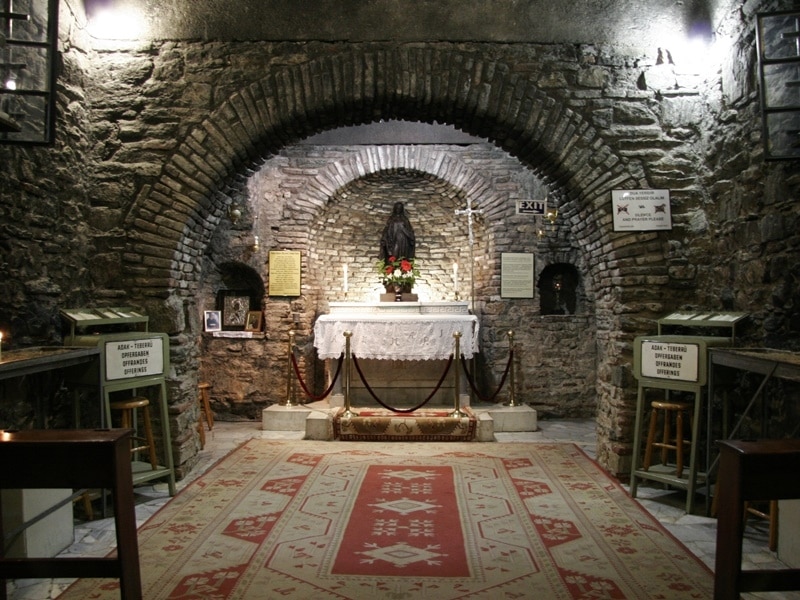
Christian Beliefs
For Christians, the House of the Virgin Mary holds immense religious importance as it symbolizes Mary’s role as the mother of Jesus Christ. Many believe that being in the presence of where Mary once lived brings them closer to the divine and strengthens their faith.
Miraculous Stories
Over the years, numerous pilgrims have reported experiencing miracles, healing, and divine interventions after visiting the House of the Virgin Mary. These stories have further solidified the sanctuary’s reputation as a place of supernatural grace and blessings.
Restoration and Preservation Efforts
The annual pilgrimages to the House of St. Mary began in 1896, leading to its restoration and transformation into a pilgrimage center operated by the Lazarist order. Extensive cleanup and restoration efforts were made, and excavations were conducted to find the Virgin Mary’s grave based on visions from Catherine Emmerich, but no conclusive results were found. In the late 1800s and early 1900s, the site was reconstructed as a chapel and a residence for guests and sisters.
During World War I, the property faced challenges, but after the war, the pilgrimages resumed in 1949, aided by the Turkish government’s construction of a paved access road. The final restoration of the House of St. Mary took place in 1951. In 1952, the Association of the Friends of Ephesus and Anne Catherine Emmerich was established to promote pilgrimages. The property changed ownership several times until George B. Quatman, an American entrepreneur, purchased it in 1955, sponsoring further developments around the House of Mary, including homes for priests and nuns.
Visiting the House of the Virgin Mary Today
Entrance
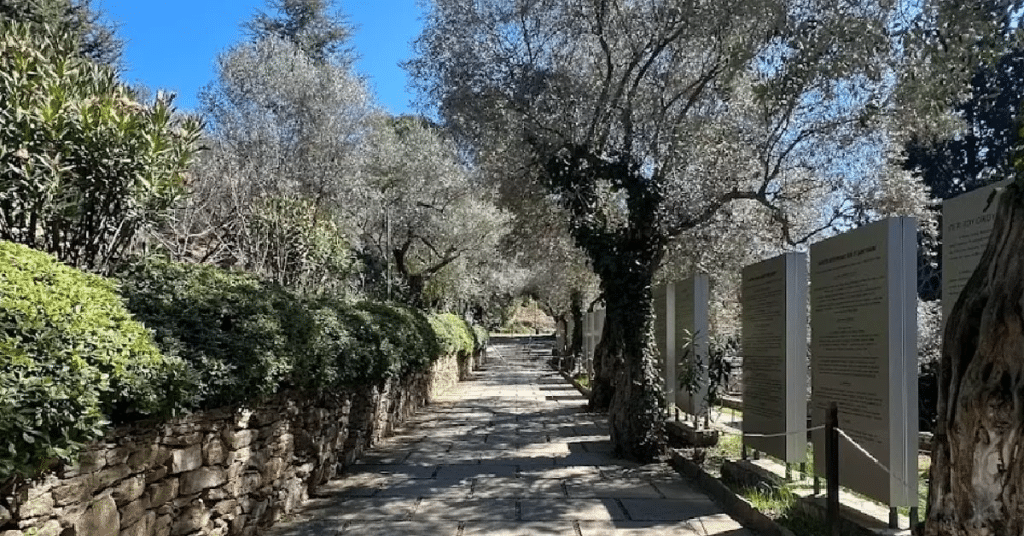
Once you arrive at the House of Virgin Mary site, walk past the souvenir shops and café to gain entry to the site.
Baptism Pool
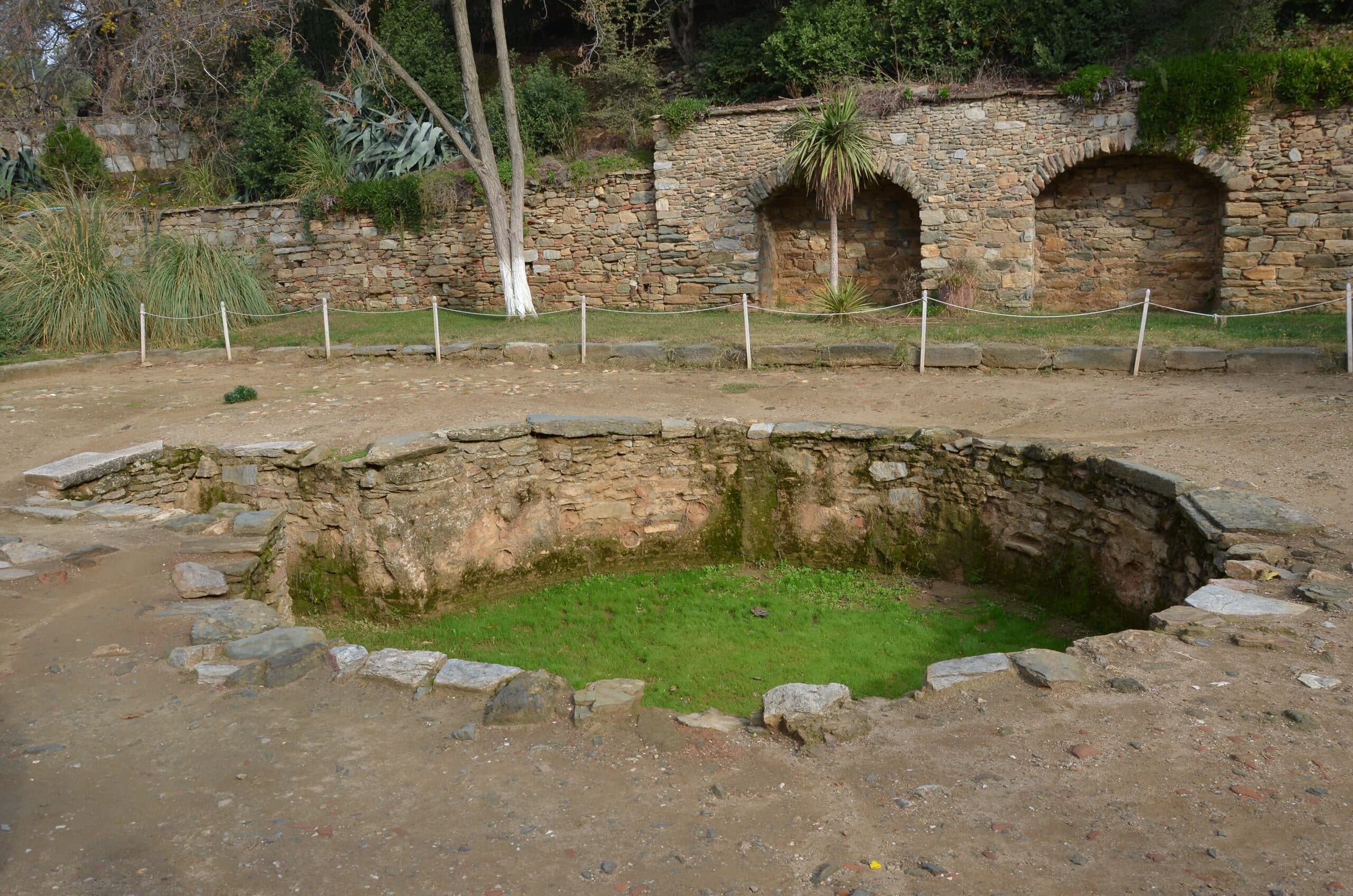
As you go to the church, you’ll find some small souvenir shops before reaching a spacious garden. In the center of this garden is a baptismal pool designed in the shape of a key.
Virgin Mary Statue

Next to the baptismal pool is a small bronze statue of the Virgin Mary surrounded by olive trees planted by Lazarist priests. This statue was gifted to the area in 1867 by a religious community from Izmir.
Praying Section
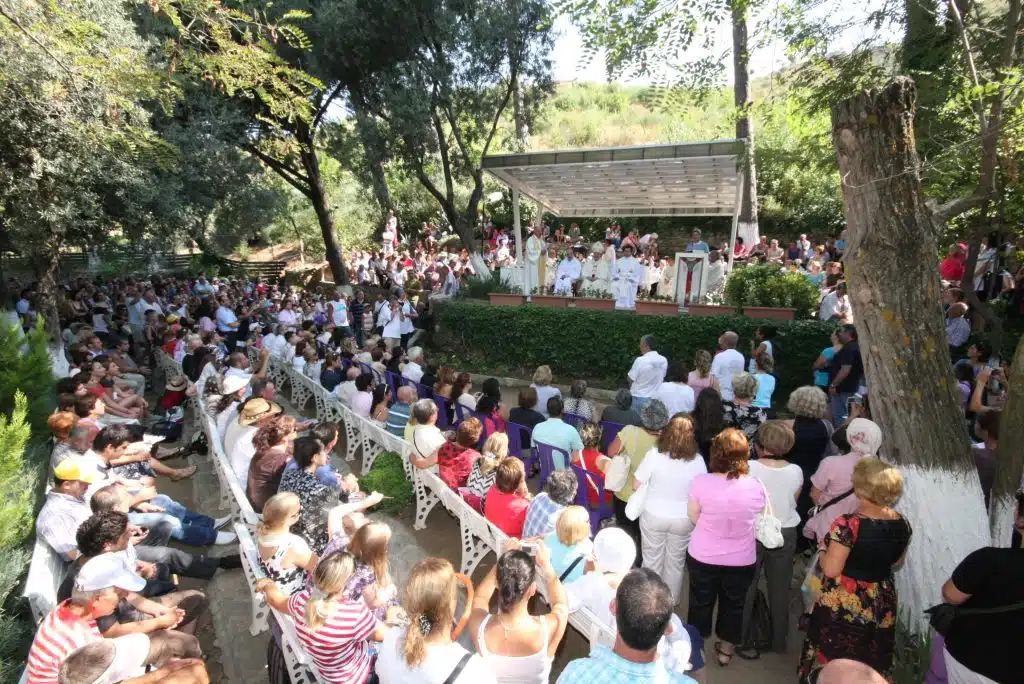
As you approach the house, a praying section can be found on the left. Per the Falling Asleep belief, Virgin Mary passed away peacefully without any pain and was taken to the heavens three days later. Every year, two significant rituals occur – the first on the last Sunday of May for Christians residing in Izmir and the second on August 15 at 10:30 am. These gatherings draw large crowds.
House

After a while, you will arrive at the house. It has a simple look with plain stone bricks and a small size, which might make it seem insignificant. The bottom half of the house is the original Virgin Mary’s house, but the Catholic church restored the top part and tried to maintain its original appearance as much as possible. Once inside, visitors go through a metal door and pick a candle before entering the main area where a statue of the Virgin Mary stands.
Prayer Candles
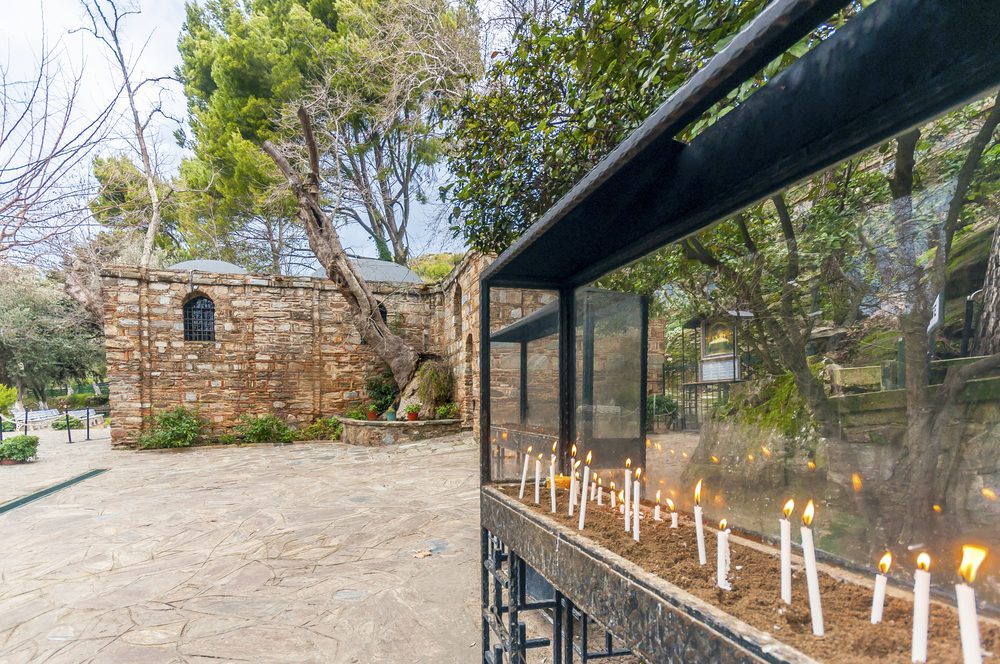
After leaving the house, you will find verses from the Qur’an and the Bible about the Virgin Mary, after spending time here reading verses in every language. You can light your candle.
Holy Water
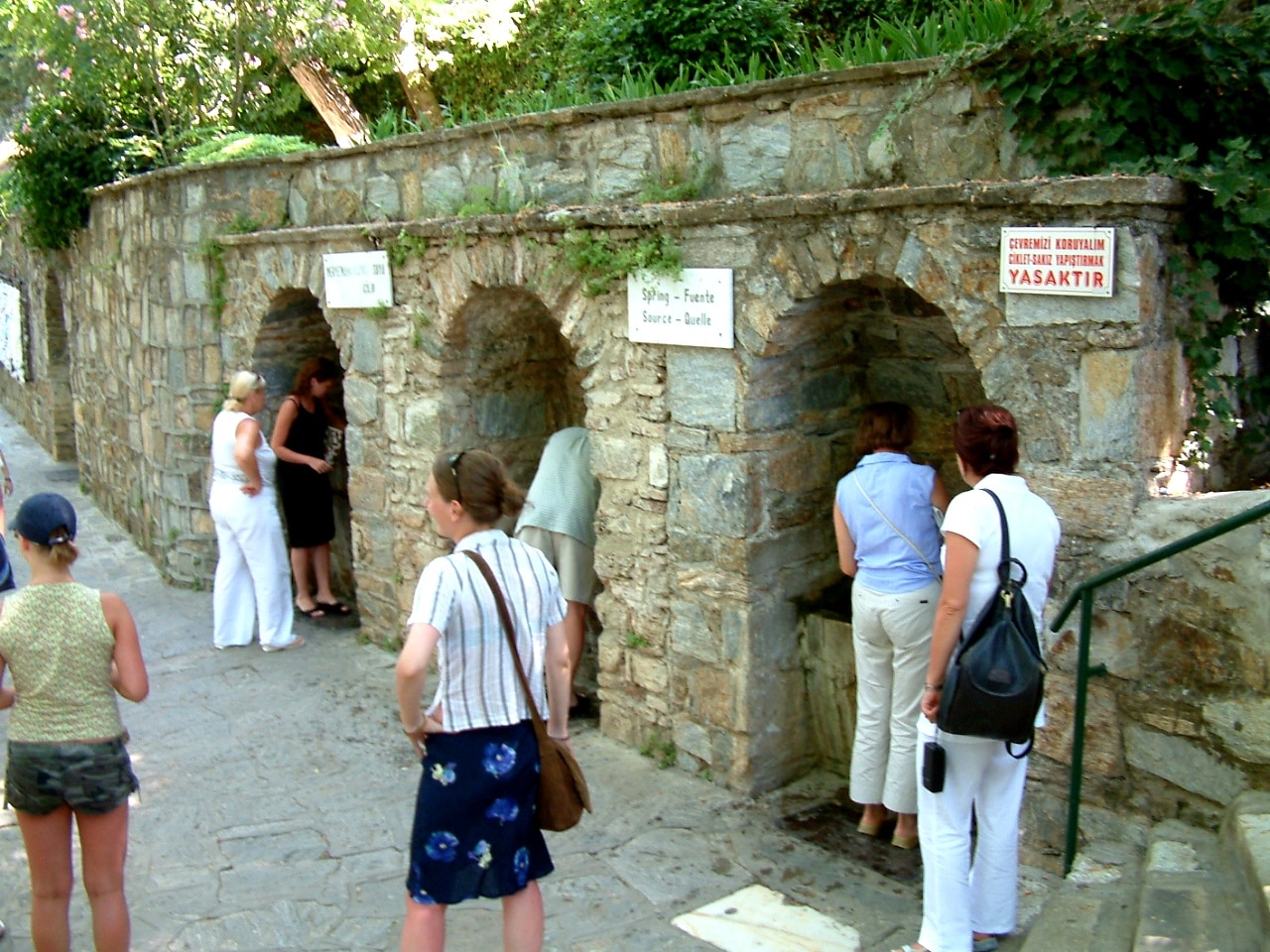
At the end of the visit to the Virgin Mary’s House, you will find three fountains on the right side, a few steps down. There is a small gift shop near the stairs, run by the Virgin Mary Association, which was founded by both Muslims and Christians in the area. The association relies solely on donations and the turnover of this little gift shop for revenue. You can purchase empty bottles from this gift shop.
The water from the nearby springs is believed to have healing powers, so visitors drink from the fountains and fill their bottles to take home. You can also take a sip from any metal tap and make a wish. According to local urban legends, each tap represents an aspect of life, with one reflecting wealth, another health, and the last one fertility. Although they are not labeled, whichever tap you drink from is said to come true.
Wishing Wall

When you visit the Church of the Virgin Mary, you’ll notice small pieces of paper and napkins hanging on the wall. This starts right by the holy water and extends along the entire wall. Surprisingly, people come here to make wishes. They write their wishes on these napkins or pieces of paper, which are then attached to thousands of other wishes. This creates a unique wishing tradition.
House of Virgin Mary Mass Hours
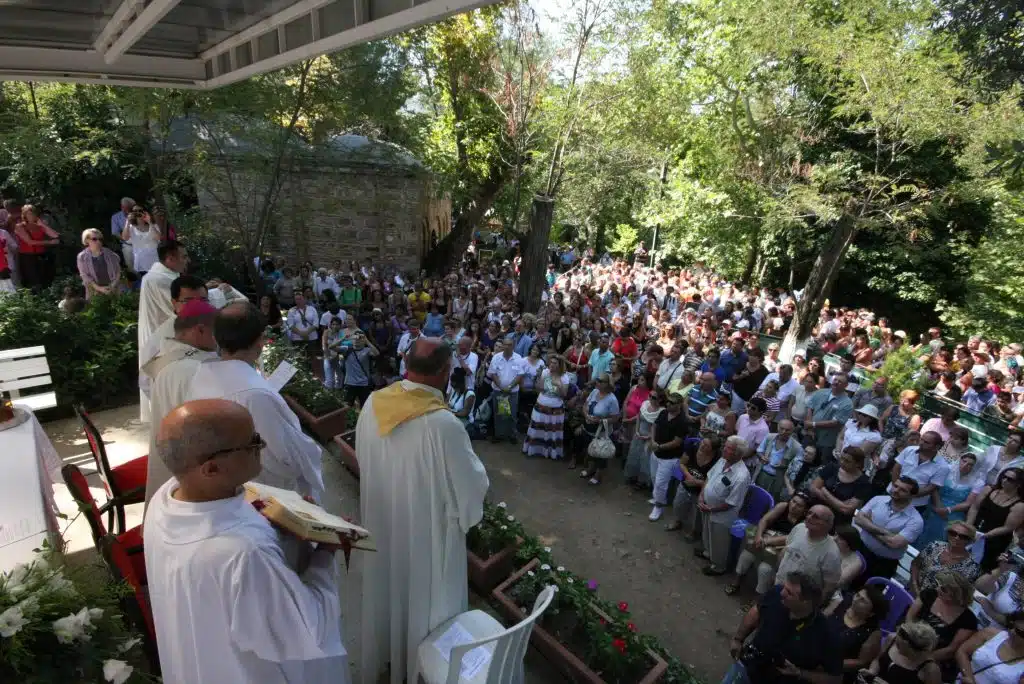
| Pray – Day | Time | Season |
|---|---|---|
| Holy Mass | ||
| Monday to Saturday | 17:30 (5:30 pm) | Nov – Apr |
| Tuesday to Sunday | 10:30 (am) | May – Oct |
| Holy Rosary | ||
| Monday to Saturday | 17:00 (5:00 pm) | Nov – Apr |
| Sunday to Saturday | 18:00 (6:00 pm) | May – Oct |
| Sunday | 10:00 (am) | All Season |
Other questions you may wonder about the house
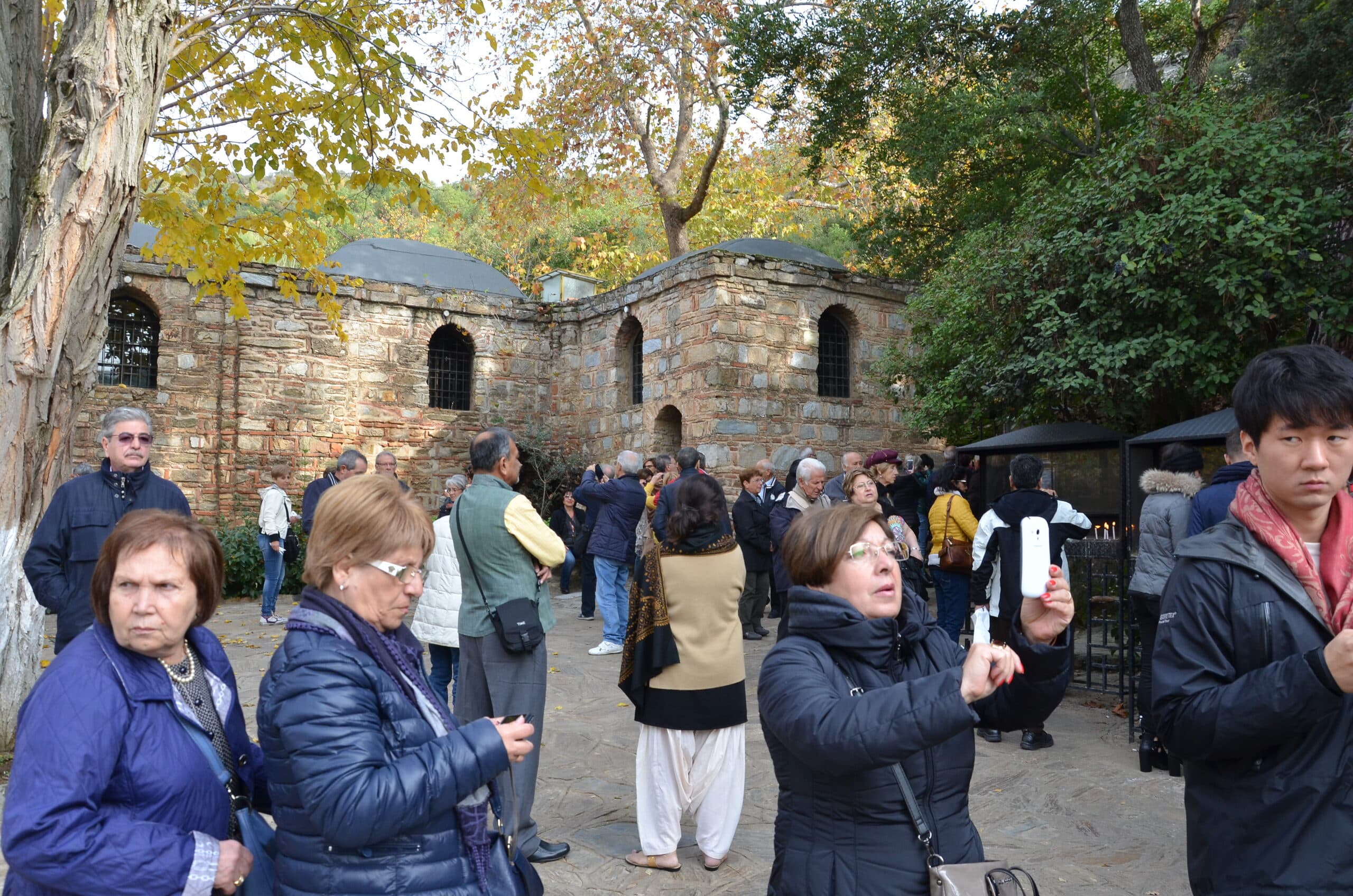
How do I get to the House of the Virgin Mary?
Since there is no public transportation to the Virgin Mary’s house, which is located within the borders of modern-day Selcuk, Izmir, you can go on a tour or take a taxi from Selcuk. Read more How to go from Selcuk to House of Virgin Mary?
What time does the Mary’s House open?
The House of the Virgin Mary accepts visitors every day of the week between 08:30 in the morning and 17:00 in the evening in November and February. In other months, the house can easily be visited between 08:00 in the morning and 18:00 in the evening.
Is there an entrance fee to Virgin Mary’s House?
You can enter the House of Virgin Mary from the box offices at the entrance for a ticket fee of 500 TL (2025). Credit card is accepted at the box office.
What do you wear on a visit to the house?
Please remember that the House of the Virgin Mary is a tourist attraction and a sacred place of worship for millions of people. As it functions as a church, visitors must adhere to a dress code suitable for such places of worship. A signboard indicating this requirement will be visible as you approach the house. To show respect, the following clothing items are not allowed within the premises: short dresses or skirts, beachwear, low-cut shirts, sleeveless shirts, crop tops, spaghetti strap shirts, slit dresses, and leggings. Remember, the dress code applies to both men and women. Men should avoid wearing shorts above the knee, jersey shorts, and sandals when visiting the House of the Virgin Mary. Let us all honor the spiritual significance of this site by dressing appropriately during our visit.
What is the best time of year to visit the House of the Virgin Mary?
The best time of year to visit the House of the Virgin Mary is spring and autumn. Spring, from April to May, and autumn, from September to October, offer pleasant weather with milder temperatures and less crowded tourist conditions. During these seasons, you can enjoy the serene atmosphere and explore the site comfortably without the scorching heat of summer or the chill of winter. However, checking the specific weather conditions and any potential events or festivals that might affect your travel plans before visiting is essential.
Are there any restrictions on photography within the House of the Virgin Mary?
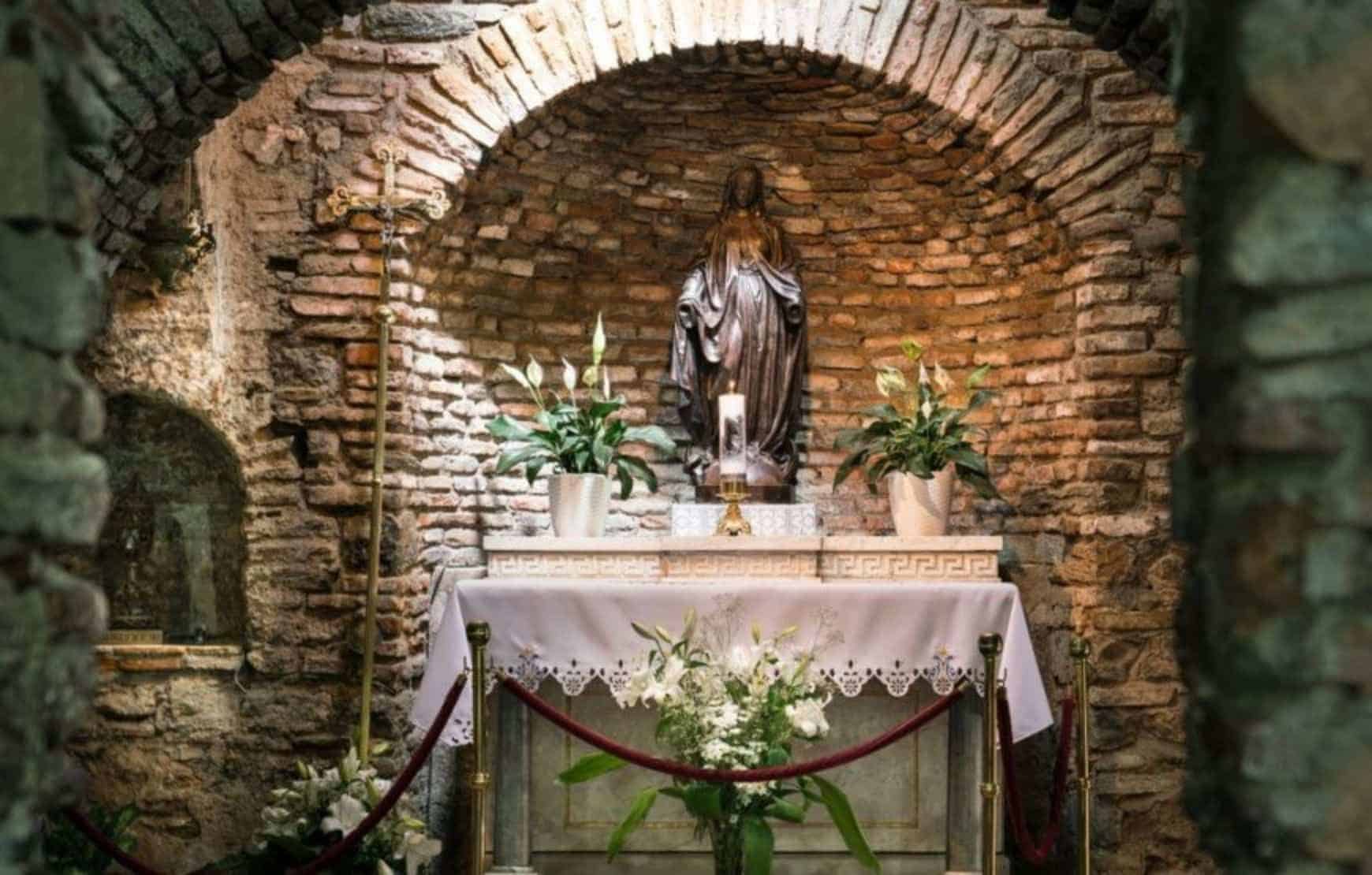
Yes, photography restrictions exist within the House of the Virgin Mary. Taking photos is forbidden inside the house itself. However, you are allowed to take photos outside the premises of the House of the Virgin Mary.
Where to sleep near Mary’s House?
Selcuk and Kusadasi provide convenient options for travelers looking to explore the house surroundings, so choosing between the two depends on your personal preferences and itinerary.
Selcuk
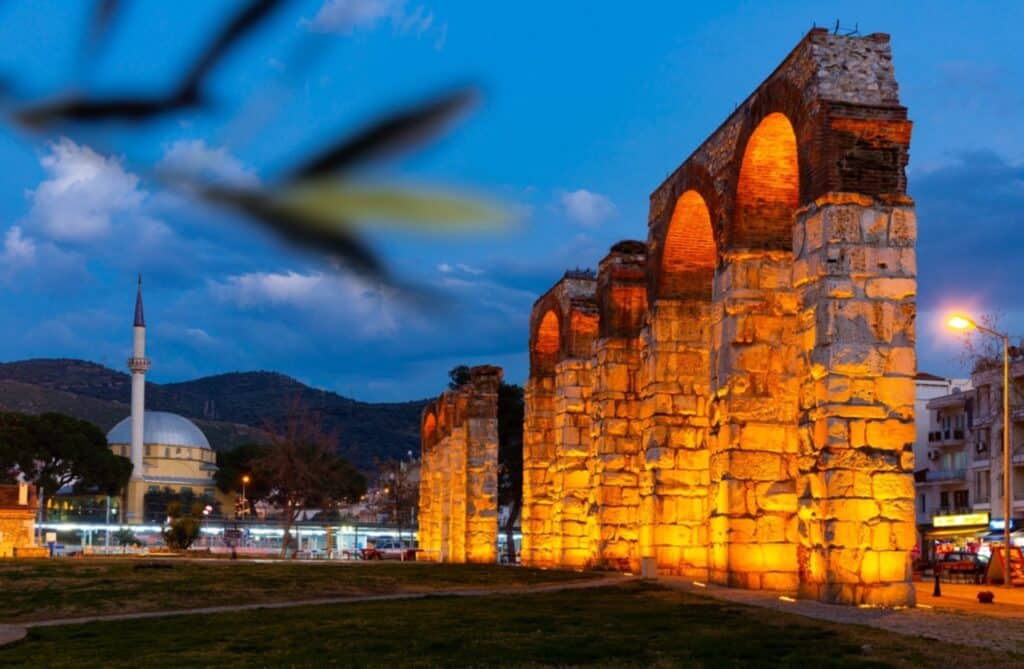
Selcuk is the closest town to Ephesus, located just a few kilometers away. It offers a range of hotels, guesthouses, and boutique accommodations catering to different budgets and preferences. Staying in Selcuk allows for easy access to Ephesus and allows one to explore other nearby attractions, such as the Basilica of St. John and the Ephesus Museum.
Kusadasi

Kusadasi is a larger coastal town located about 20 kilometers from Ephesus. It is a popular tourist destination with a wide range of hotels, resorts, and beachfront accommodations. Kusadasi offers a vibrant atmosphere, various dining options, and entertainment activities. While staying in Kusadasi, you can enjoy the nearby beaches and take advantage of the amenities and services available in the town.
The House of the Virgin Mary bridges the past and present, connecting people of diverse backgrounds through faith, history, and spirituality. As pilgrims and tourists continue to flock to this sacred sanctuary, its legacy as a place of profound significance remains eternal.
Do not forget to read A Comprehensive Guide to Ephesus Tour: Everything You Need to Know before planning your holiday!


